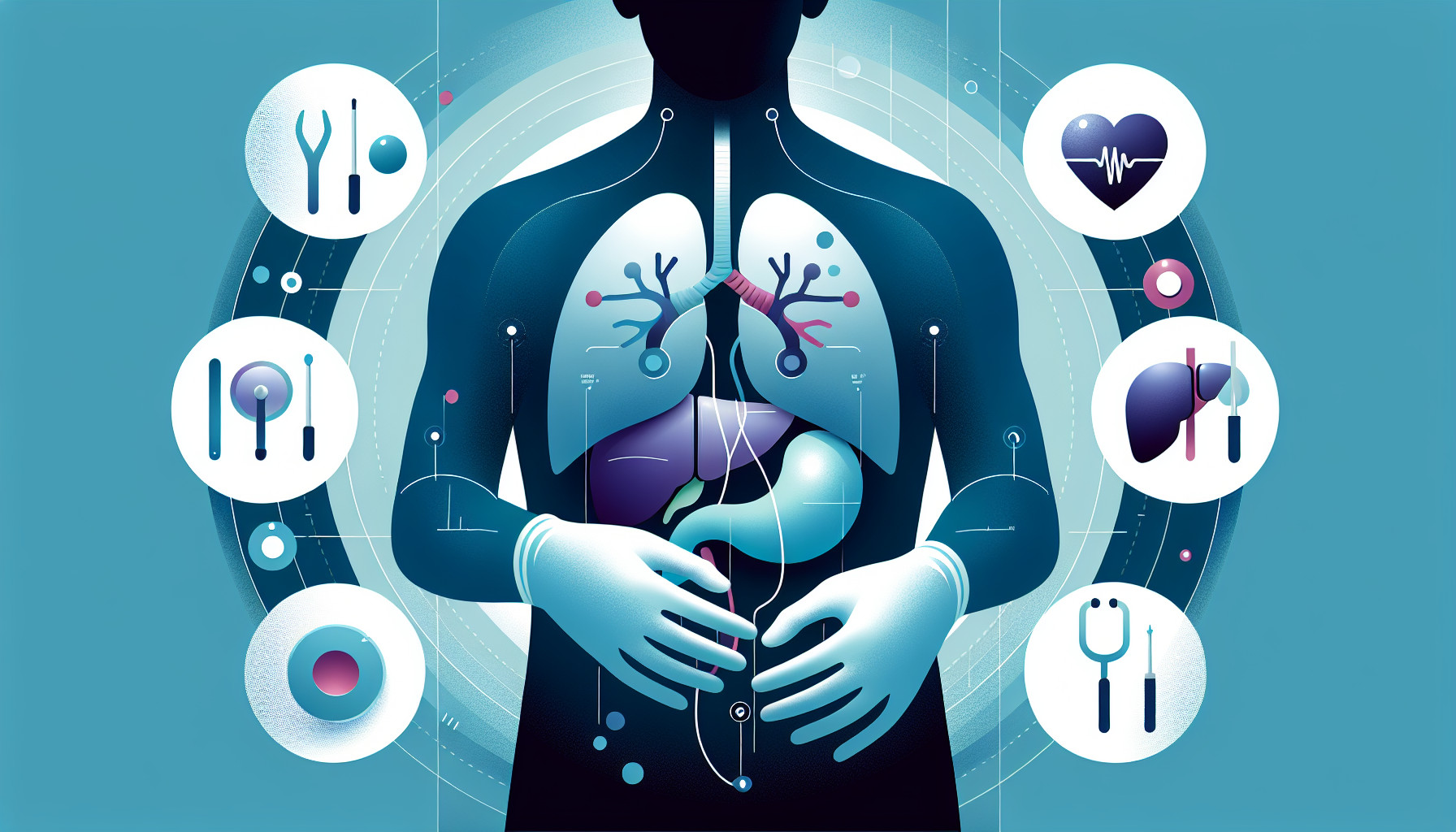Our Summary
This research paper discusses the challenges and opportunities in using optical biomarkers for solid-organ transplants, specifically focusing on the liver. The process of transplanting organs is complex and there is a need for better ways to assess the health and viability of donor organs during the procedure. Currently, it is difficult to accurately assess damage to the liver (such as fibrosis, steatosis, and necrosis) and to identify early signs of irreversible injury. The paper suggests that using optical biomarkers could provide a real-time, nondestructive method for assessing these factors. This could not only improve the success rate of transplants, but also assist in managing the patient’s health post-transplant. However, there are also challenges with this method, such as the liver’s protective outer layer interfering with the readings. The paper concludes by outlining what a successful optical biomarker technology would need to demonstrate in order to be considered for clinical use.
FAQs
- What are the current challenges in assessing the health and viability of donor organs during a transplant procedure?
- How could the use of optical biomarkers improve the success rate of transplants and post-transplant patient management?
- What are the challenges in using optical biomarkers for assessing liver health and what would a successful optical biomarker technology need to demonstrate for clinical use?
Doctor’s Tip
A helpful tip a doctor might give a patient about organ transplant is to closely follow the post-transplant care instructions provided by the medical team. This includes taking medications as prescribed, attending follow-up appointments, maintaining a healthy lifestyle, and avoiding harmful substances such as tobacco and excessive alcohol. It is important to communicate any changes in health or symptoms to the medical team promptly to ensure the best possible outcome after the transplant.
Suitable For
Patients who are typically recommended for organ transplant are those who are suffering from end-stage organ failure, where other treatment options have been exhausted and the only viable option for survival is a transplant. This can include patients with conditions such as chronic kidney disease, liver failure, heart failure, lung disease, and others.
In the case of liver transplants, patients with end-stage liver disease due to conditions such as cirrhosis, hepatitis, or liver cancer may be recommended for a transplant. These patients may experience symptoms such as jaundice, fatigue, swelling, and confusion, and their liver function may be severely compromised.
It is important for patients being considered for organ transplant to undergo a thorough evaluation process to determine their eligibility and suitability for the procedure. This evaluation may include medical tests, imaging studies, psychological assessments, and consultations with a multidisciplinary team of healthcare providers.
Ultimately, the decision to recommend organ transplant for a patient is made based on a combination of factors, including the severity of their condition, their overall health and medical history, their ability to tolerate the transplant procedure and post-transplant medications, and the availability of donor organs.
Timeline
Before the transplant:
- Patient is diagnosed with a medical condition that requires an organ transplant.
- Patient undergoes extensive testing to determine eligibility for transplant.
- Patient is placed on a waiting list for a donor organ.
- Patient waits for a suitable donor match to become available.
- Patient undergoes pre-transplant evaluations and preparations.
- Donor organ becomes available and transplant surgery is scheduled.
After the transplant:
- Patient undergoes the transplant surgery.
- Patient is closely monitored in the intensive care unit post-surgery.
- Patient begins the recovery process in the hospital.
- Patient is discharged from the hospital and continues recovery at home.
- Patient follows a strict medication regimen to prevent organ rejection.
- Patient attends regular follow-up appointments with healthcare providers.
- Patient undergoes routine testing to assess the health and function of the transplanted organ.
- Patient adjusts to life with a transplanted organ, including managing potential side effects and complications.
- Patient experiences improved health and quality of life as a result of the successful transplant.
What to Ask Your Doctor
- How will the use of optical biomarkers improve the success rate of liver transplants?
- What specific factors can optical biomarkers assess in donor organs that traditional methods cannot?
- How will the use of optical biomarkers impact post-transplant care and monitoring?
- What are the potential limitations or challenges associated with using optical biomarkers for organ transplants?
- What criteria would need to be met for optical biomarker technology to be considered for clinical use in organ transplants?
- How does the liver’s protective outer layer affect the accuracy of optical biomarker readings?
- Are there any potential risks or side effects associated with using optical biomarkers in organ transplant procedures?
- What research or studies have been conducted to support the effectiveness of optical biomarkers in assessing donor organ health and viability?
- How will the implementation of optical biomarkers impact the overall process and timeline of organ transplant procedures?
- What are the potential cost implications of incorporating optical biomarker technology into organ transplant procedures?
Reference
Authors: Piao D, Hawxby A, Wright H, Rubin EM. Journal: J Biomed Opt. 2018 Aug;23(8):1-14. doi: 10.1117/1.JBO.23.8.080601. PMID: 30160078
